This week we had our second research lab, this time we were interested in exploring the use of space within Contact Improvisation and speed in particular relation to tone. We began just looking at space and had pairs working only on a low level and then have another pair working only on a high level. In both these improvisations, we found that there was little variation of surfaces being used and not much variation of height within the chosen level. However, we found that being restricted to only one level helped to brake some of our habitual movement as most of the time if we are stuck on what movement to do we instantly drop back down to the floor, but when we were restricted to staying on a high level we had to figure out what else we could do instead of this. After this feedback we repeated this exercise and the movement was much more varied as the dancers were varying their levels more and finding different surfaces to work with. The pairs also looked much more comfortable as they were not thinking too much on the restriction of not being able to move up or vice versa.
Photos from myself and my partner working on a low level.
Photos of the pairs doing Contact Improvisation at a high level
After this we thought about given direction to our improvisation, asking pairs to travel across the space using both levels. We found that the duet only travelled in a linear pattern, so this could have been developed more to have the dancers thinking about traveling out in multiple directions. However, the improvisation itself looked very natural and fluid. We noticed that the dancers found it easier to travel whilst they were on a higher level as they could use their feet more so I think we could have explored this more to try and get the pairs to travel as far on a lower level which would have made them really explore the ‘push’ motion that they need to enable in their feet. Also, although the dancers travelled further on a higher level we found that there was a slight loss of connection between the pair, so this would need practicing so that they could establish a constant connection between each other. Moreover, although the improvising as a whole felt more natural, the transitions between the two levels still felt a bit awkward, meaning that in our further improvisation this would be an area that we could look at strengthening.
Above are photos from the pairs experimenting with both levels and trying to travel.
We then began looking at speed, we wanted to see if there a direct correlation between speed and a specific tone or whether you could do any tone with a chosen speed. Firstly myself and my partner used a slow speed with a hard tone, then repeated this with a soft tone. We found that we could quite easily use the different tones at this speed. However, the audience could not see the difference between the two tones and felt like it looked like it was all with a soft tone, this was interesting as it was very obvious for us dancing but we were not aware that the experience was so different for the viewer. After this we tried using these two tones with a fast speed and the pair improvising found it very difficult to move with a fast speed but a soft tone which dropped the pace of their movement. Although they found using a hard tone easier, from an audience prospective, again the resistance between the two dancers was not clear from an audience’s perspective, the movement also lacked fluidity and looked clunky in places. After exploring both of these we came to an agreement that in Contact Improvisation you cannot set a specific tonal quality to the movement, rather let your body decide which tone to use and use hard tones in order to gain momentum into movement in order to get that required ‘push’ action.
Photos from our improvisation with use of tone and speed.
Our jam this week was different to all of the others that we have previously taken part it as we were blindfolded for this one. I was excited to explore Contact Improvisation in this was as I was interested in how much it would affect my improvising. The most noticeable thing for me was our heightened sense of touch and sound. In order to try and locate partners I have to listen and feel for the vibrations on the floor in order to calculate how close a potential partner was. I found the use of touch very beautiful in this jam as everyone had to completely trust and connect to their partner just through touch which brought out some beautiful movement. In my opinion the movement created was very different to what we normally create as we did not take as many risks however, people still did lifts and gave each other’s weight throughout which surprised me. The last discovery I had whilst undertaking in this jam was that because you were not bias as to who you danced with it meant that everyone danced with people which they normally did not and some lovely connections were created between these new pairs.
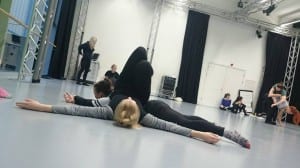


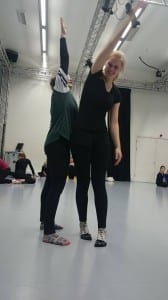
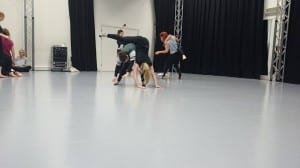
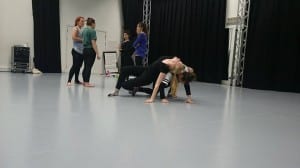
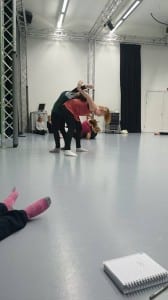
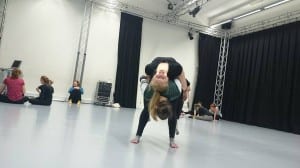


Comments are closed.